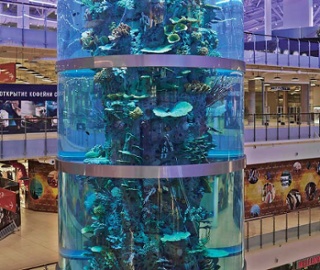As a Colorado resident and avid craft beer drinker, I prefer my local microbrews in bottles rather than cans. I think bottles provide nicer looking pour than cans. But none of my favorite craft brewers offer their beers in plastic bottles. So I am stuck with glass bottles for now. But I’m hoping that some of the smart craft brewers will begin to offer plastic bottles; because from an environmental perspective, plastic has a lot going for it.
First, consider production:
Producing glass takes an enourmous amount of energy since the raw materials, normally a mixture of sand, soda ash, limestone, dolomite and feldspar, must be heated to more than 2,700 degrees F. And glass manufacturing releases a series of air-polluting compounds such as nitrogen oxides, sulfur dioxides and particulates into the air. These particulates are a special concern because they are small enough to enter the nose and throat and reach deep into the lungs, where they can pose serious health problems.
The International Finance Group arm of the World Bank has published figures showing that particulate emissions for glass manufacturing are 16 to 33 times higher than for plastics manufacturing. One European study, published in the January 2009 issue of the International Journal of Life Cycle Assessment, looked at the total environmental benefit of using plastics instead of glass for baby food jars. Their findings can be summarized by saying that using plastics instead of glass reduced the environmental impact on primary (manufacturing) energy by 14 to 27 percent, reduced CO2 emmisions by 28 to 31 percent, reduced particulates by 31 to 34 percent and reduced the components that cause acid rain by 28 to 31 percent.
Looking ahead, we all anticipate energy efficiency improvement in the manufacturing of glass and plastics. But a glass plant runs seven days a week, 24 hours a day; and the glass-making furnaces cannot be shut down and cooled during their lifetime of 15 to 20 years. So any energy efficiency technologies that come in the meantime would potentially have to wait years for installation into existing glass plants. Plastics manufacturing is not governed by these restraints, so improvements can be made at any time during the lifetime of the facility.
And transportation:
Glass is a lot heavier to transport than plastic. Being heavier means that glass uses more energy, releases more CO2 into the atmosphere and costs more money to ship than plastic. It has been estimated that if you filled a delivery truck with half-gallon bottles of milk (or beer), the glass would constitute about one-third of the total weight of the shipment, compared with about 5 percent of the total weight of the shipment for polyethylene terephthalate (PET) or high density polyethylene (HDPE) bottles.
Advantages of plastics in action:
Custom plastic fabrication is easier and uses less energy than glass fabrication. Therefore, the process of heating plastics into shapes such as skylight domes and flight aircraft canopies is yet another arena in which plastics shine over glass.
Clear plastics also have a lot going for them, over glass, as a glazing material. Singlepane thickness acrylic windows weigh half (1,150-1,190 kg/m3) as much as silica glass windows (2,400-2,800 kg/m3). This is a primary reason why airpland windows are made from plastics.
And acrylic clear sheets let in up to 92 percent of the available visible light where silica glass windows admit something in the 80 to 90 percent range. Acrylic windows retain their clarity as thickness increases, while distortion increases with thickness in silica glass windows. This greater transmission of light by plastics over glass permits architects more flexibility in designing ways to maximize the use of natural light in new and renovated buildings.
 Single-ply clear acrylic sheet conducts less heat than glass. This is demonstrated by the way water-filled acrylic tanks are warmer to the touch than silica glass tanks, and by the way there tends to be far less condensation on the outside of plastic tanks than on the outside of glass tanks.
Single-ply clear acrylic sheet conducts less heat than glass. This is demonstrated by the way water-filled acrylic tanks are warmer to the touch than silica glass tanks, and by the way there tends to be far less condensation on the outside of plastic tanks than on the outside of glass tanks.
Multi-wall polycarbonate sheet for greenhouse glazing has much higher
R-values than silica glass for greenhouse panels; at 6 mm twin-wall polycarbonate
those R-values are 1.6 times higher and at 16 mm triple-wall polycarbonate
the R-value is 2.5 times higher than glass. (For those not familiar with this
term, R-value is a measure of thermal resistance used in the building and
construction industry.)
And, of course, clear lucite and glycol modified polyester terephthalate (PET-G)
also have higher impact strength than silica glass and will not shatter. Acrylic
itself is between 8 and 17 times stronger than silica glass. Plus, when see-through plastic sheets do break, they tend to crack, not shatter, and are less
apt to break into dangerous shards like silica glass.
Since silica glass breaks more easily than acrylic, PETG and polycarbonate,
it requires more cushioning material to ship. This additional packing material
for glass means more weight on the truck, which compounds the transportation
energy and air pollution disadvantage for glass compared to plastic, in
addition to more landfill waste if this packing material isn’t repurposed and/
or recycled.
One more benefit of the shatter-proof characteristics of plastics: they
make plastics more suitable for ballistic grade and containment grade products.
So, the next time you’re talking to someone who is promoting glass as being greener than plastics, tell them that glass may not be all it’s cracked up to be.








